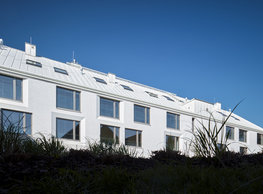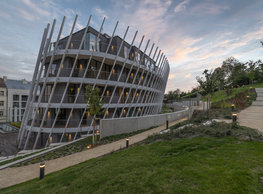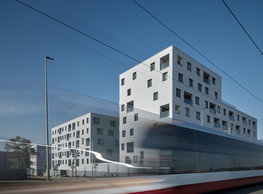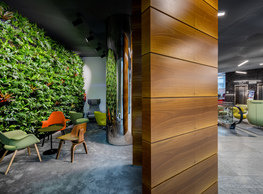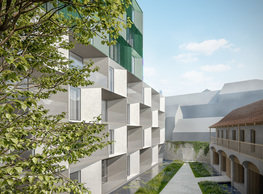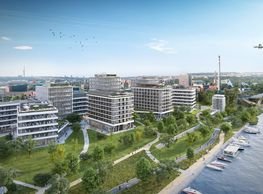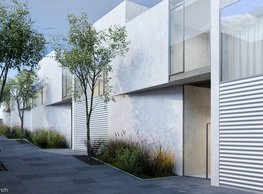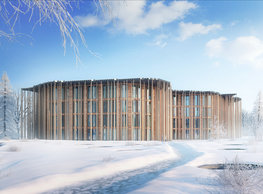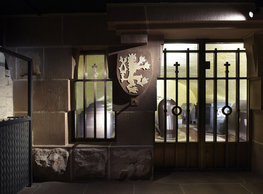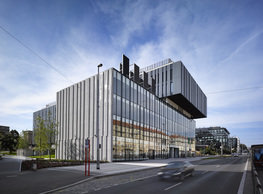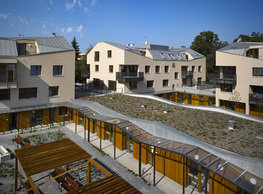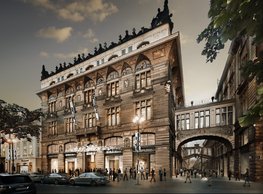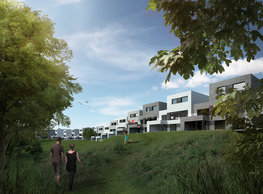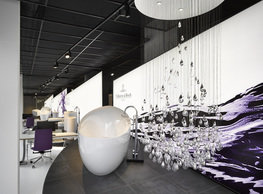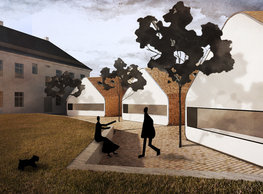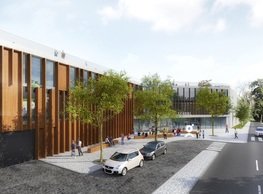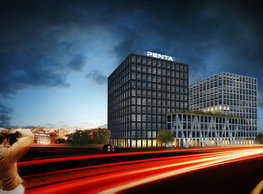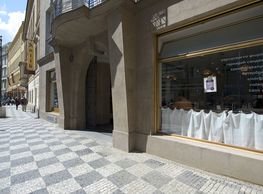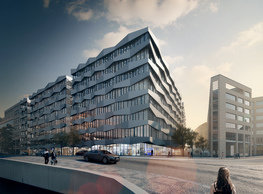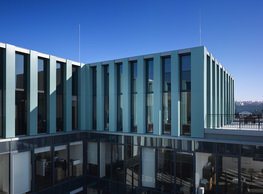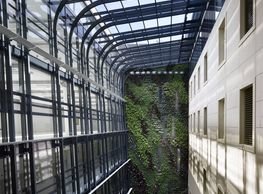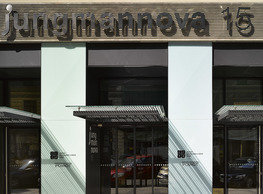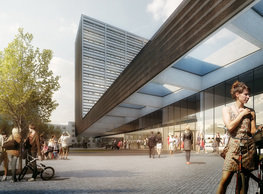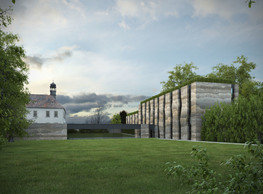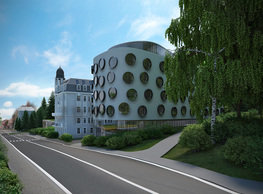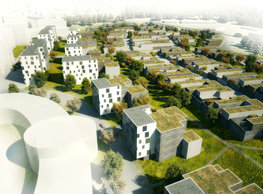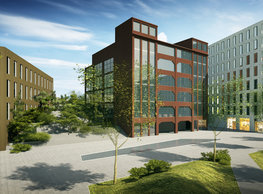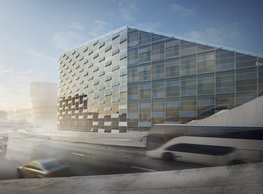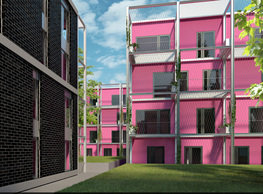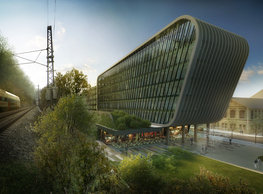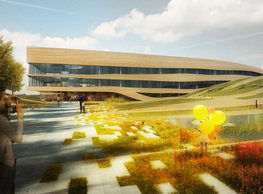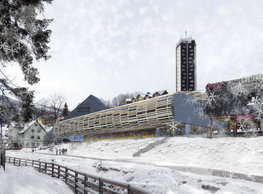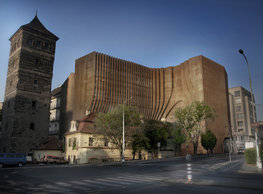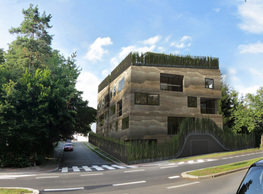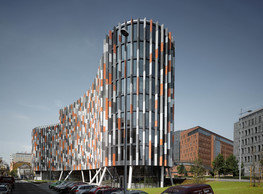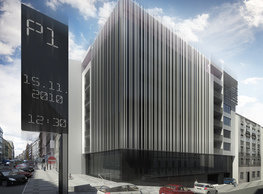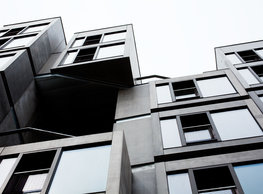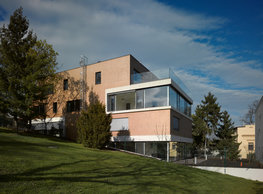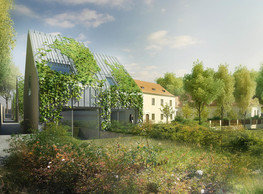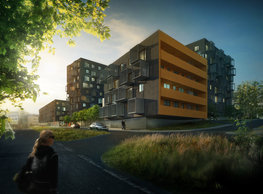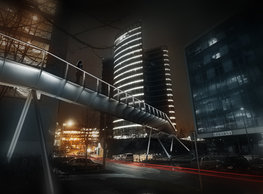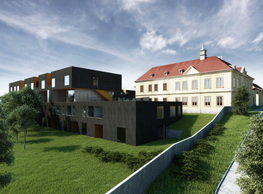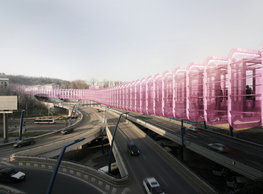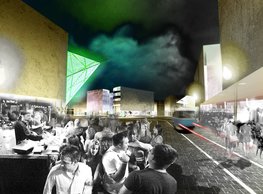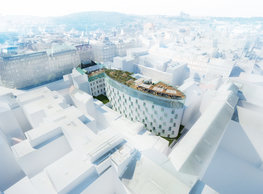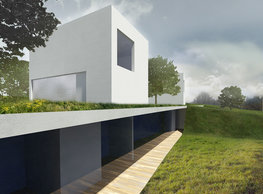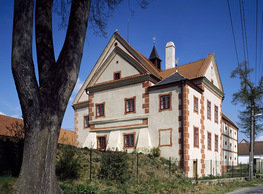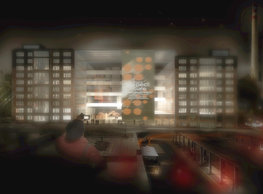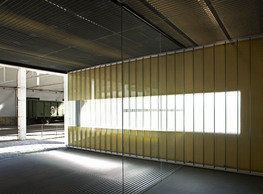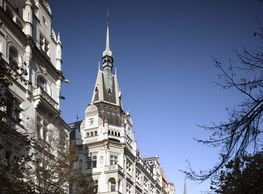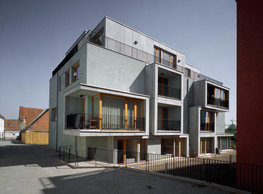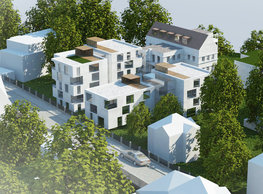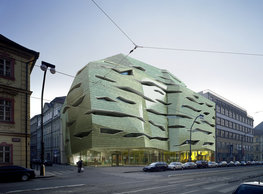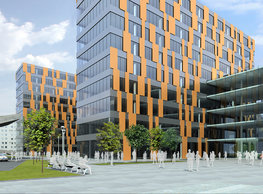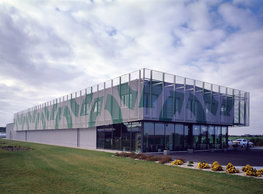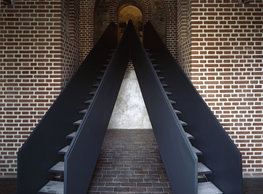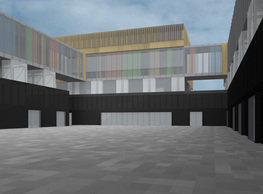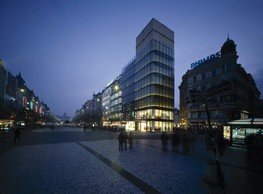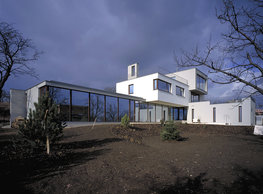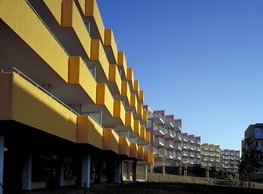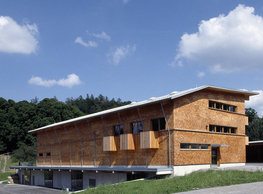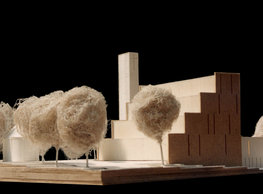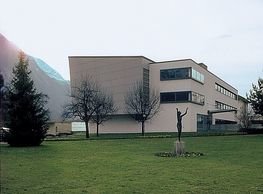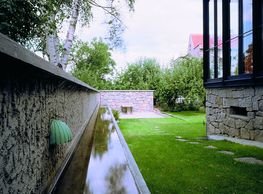However, how should we cope with the fact that the new check-in hall is a large structural volume positioned along the track and does not extend into the vicinity of the historical station building? The old station building is to be given a new and partly public function, but reducing it to a central mass with no side wings would deform the building proportionally. To satisfy both conflicting demands, we eventually opted for a solution to return the historical station to its appearance at its construction, i.e., before the horizontal wings were extended. The logical shape of the listed building will be preserved, with the four window axes added at the end of the 19th century on both sides to the original mass, always sacrificed in favour of modernity. The old building can then be treated as an integral monument, and all its authentic structural detailing can be restored according to contemporary documentation, including the platform porch - exactly how we treat it in the design. The most significant new building we designed is located west of the old railway station. In our approach, it is a building straddling the internal and external environments. A modern railway station's life occurs not only in the interior but equally in the exterior: in the outer space it covers, presents, and controls. That is specifically in the form of areas covered by generous roof overhangs on all sides of the building. In the case of Nymburk, it is even more so because the junction integrates a bus terminal with the station and shares the valuable covered forecourt with the bus service. We consider it a great benefit if the open-roofed belt around the building's perimeter can be free of support. This effect is achieved by the special spatial construction of the hall's roof carrying the load of the unrestricted corners of the cantilevered overhang. This elevated, lightweight, steel, uninsulated, and wind-permeable superstructure also has another function. First, it turns the otherwise relatively low ground-floor check-in hall into a high partner landmark to the original station building. It becomes a vehicle for communicating the location, time, and current train departures. An uninformed visitor to the station thus cannot confuse the old and the new station or doubt where to take the train. Moreover, thanks to the elevated corner towers, the new check-in building will be a prominent landmark on the axis of Palacký Avenue. The space east of the historical station building is partly filled and partly covered by the new technology building for servicing the line. The simple cubic volume also roofs a block of bicycle storage racks. On the contrary, we propose to close the western side of the station forecourt with the mass of a grocery store, which will conveniently complement the new check-in hall's range of goods and services and bring additional city-forming functionality and life to the site. The cohabitation of transport terminals and smaller urban self-service shops is a proven phenomenon. The last, but certainly not insignificant, newly designed mass in the area is a parking house between the railway line and Nádražní Street. Particularly given the passenger capacity expected to almost double in the future, we consider the possibility proposed by the client to solve the parking with a multi-story building practically the only feasible solution.
portfolio
![]()
monastery of st. gabriel
![]()
nová zbrojovka block g
![]()
nad krocínkou a
![]()
nad krocínkou b
![]()
dobřichovice farmstead
![]()
nymburk train station
![]()
stará boleslav primary school
![]()
holečkova 26 residence
![]()
komořany elementary school
![]()
kindergarten jeseniova
![]()
nová elektra residence
![]()
filadelfie bldg. – the new reception
![]()
písnice elementary school
![]()
bytové domy vítězná/újezd
![]()
afi vokovice
![]()
showroom elite bath/bulthaup sk
![]()
port 7
![]()
main point pankrác
![]()
oktáva houses
![]()
lesy čr headquarters
![]()
royal tomb
![]()
the blox
![]()
dob centre in dobřichovice
![]()
contemporary glass muzeum
![]()
pod hády brno
![]()
elite bath showroom karlín
![]()
communal flats in dolní břežany
![]()
šantovka residence
![]()
open gate II
![]()
ružinov office building
![]()
dlouhá palace
![]()
vinohradská 8
![]()
masarykovo railway station
![]()
retail and office development
![]()
jindřišská 16
![]()
jungmannova 15
![]()
regina hradec králové
![]()
chateau dolní břežany
![]()
the metropole hotel in mariánské lázně (marienbad)
![]()
waltrovka
![]()
square mechanica
![]()
porto mercandini
![]()
plzeňská 18
![]()
vrchlického residence
![]()
karlín railway
![]()
science research centre
![]()
sněžka apartment house
![]()
novomlýnská brána
![]()
jeremenkova residence
![]()
main point karlin
![]()
flat b3 prague
![]()
štěpánská 47
![]()
tenement house with a gym
![]()
švédská residence
![]()
hendlův dvůr
![]()
klamovka residential complex
![]()
botanica vidoule phase 6
![]()
footbridge in bb centre
![]()
perníkářka manor
![]()
municipal interventions prague 2010
![]()
černá louka ostrava
![]()
evropa hotel
![]()
bb centrum filadelfie
![]()
family houses in radotín
![]()
cherubín II
![]()
fc bohemians praha 1905
![]()
ostrolovský újezd chateau
![]()
zlín cultural centre
![]()
znojemská hospice
![]()
pilsner urquell
![]()
st. wenceslas exposition
![]()
institute of noblewomen
![]()
karlov office building
![]()
cherub I
![]()
pařížská 9
![]()
jinonice villa park
![]()
petynka hotel
![]()
sanopz residential complex
![]()
viktoria center pankrác
![]()
hotel crystal palace
![]()
invalidovna offices
![]()
performing arts center seoul
![]()
boscolo carlo IV hotel
![]()
toner recycling company building
![]()
the story of prague castle
![]()
umprum in prague-ďáblice
![]()
mrázovka apartment villa
![]()
school gym in prague-troja
![]()
roma hotel
![]()
euro palace
![]()
ten centuries of architecture
![]()
villa třešňovka
![]()
velká skála
![]()
sternberg palace prague castle
![]()
st. nicholas church in čečovice
![]()
olga and václav havel's villa
![]()
tierpark langenberg
![]()
a church in neratovice
![]()
school centre interlaken
![]()
forestry school in lyss
![]()
villa dobeška
![]()
tuscany in maps




